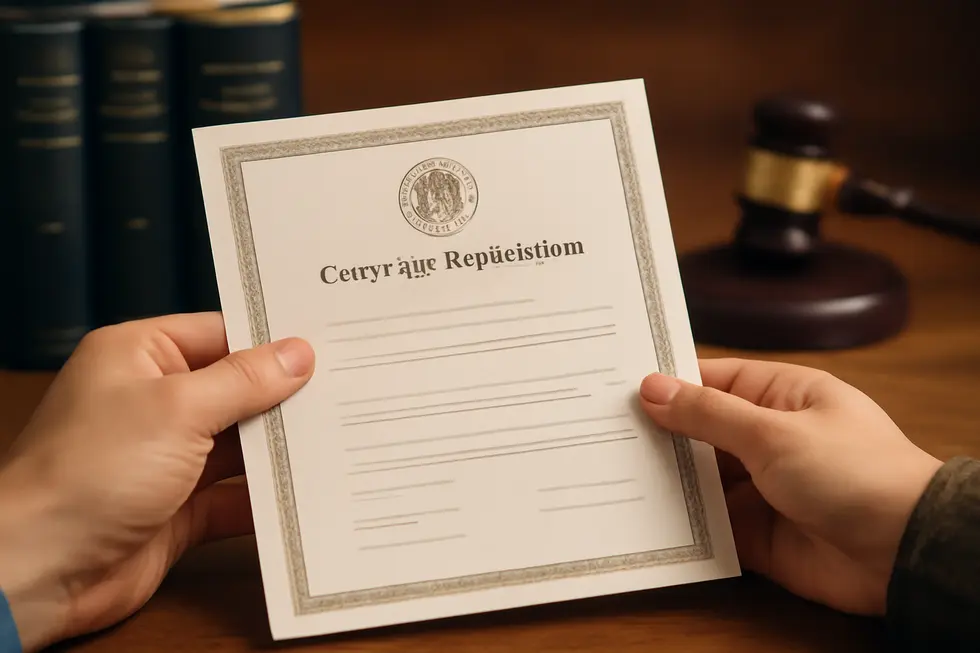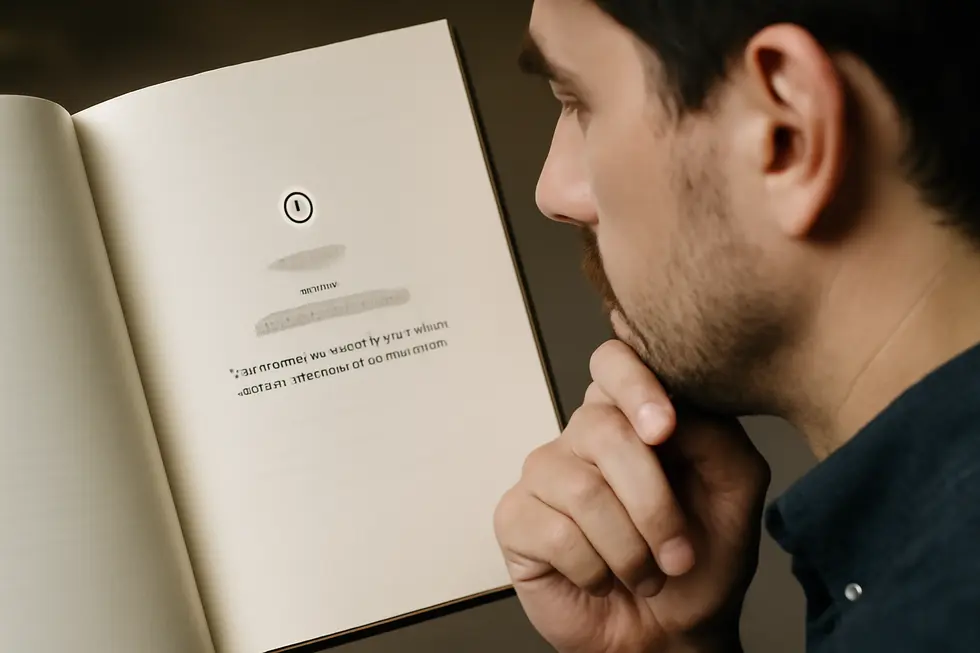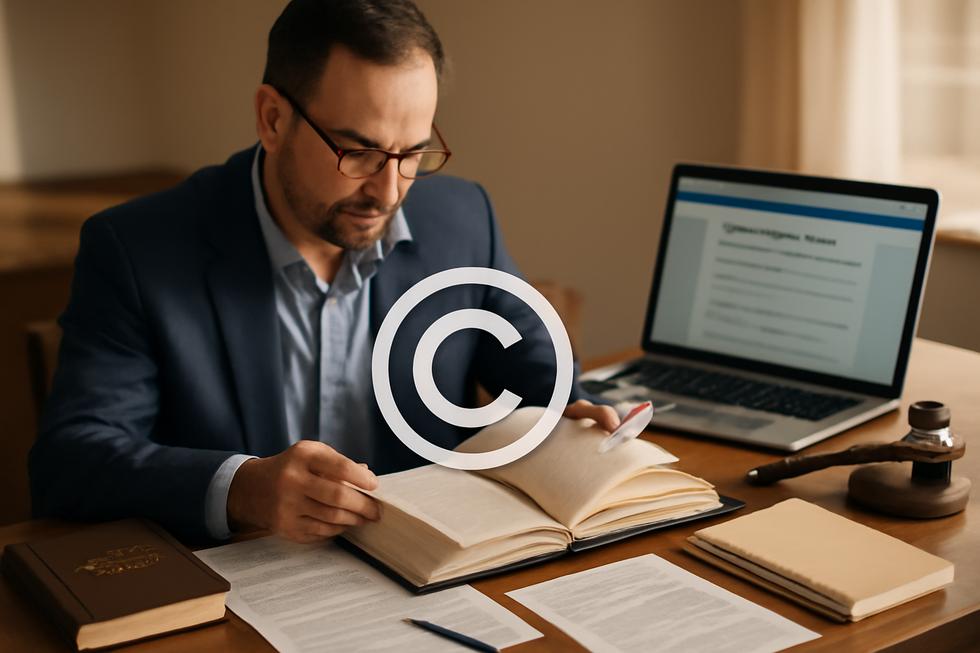Introduction
Copyright protection is a critical aspect for business owners involved in publishing, selling, or licensing books. Knowing the foundational elements of copyright—ownership, registration, and originality requirements—can empower businesses to manage risks, protect intellectual property, and maximize commercial value. This guide unpacks key components of copyright information for books, beginning with how ownership and rights transfer influence control over literary works. It then explores the important role of copyright registration and the legal protections it affords, enhancing your ability to enforce rights. Finally, it clarifies the significance of the copyright page and the originality standards that determine the eligibility of a work for copyright, completing the comprehensive picture essential for business owners navigating book-related copyrights.
Tables of Contents
Chapter 1: Ownership and Transfer in Copyright Information for Books
- Navigating Legal Ownership and Transfer: Foundations and Formalities Behind Book Copyright
- Balancing Economic Incentives and Moral Rights in Book Copyright Ownership and Transfer
Chapter 2: Copyright Registration and Legal Protections in Copyright Information for Books
- Navigating Copyright Registration: Unlocking Essential Legal Protections for Your Book
- Understanding the Scope and Duration of Copyright Protections for Books
Chapter 3: Copyright Page and Originality Requirements in Copyright Information for Books
- Decoding the Copyright Page: Legal Foundations and Vital Publishing Details in Protecting Book Rights
- Understanding Originality and Fixation: The Cornerstones of Book Copyright Protection
Chapter 1: Ownership and Transfer in Copyright Information for Books

1. Navigating Legal Ownership and Transfer: Foundations and Formalities Behind Book Copyright
Copyright protection for books fundamentally establishes an author’s exclusive legal rights as soon as the work is fixed in a tangible form, such as writing, printing, or a digital file. Under U.S. law, these rights come into existence automatically, without the need for any formal registration or the inclusion of a copyright notice. This automatic protection ensures that the author holds the primary rights to reproduce, distribute, display publicly, and create derivative works based on the original book. The duration of these rights extends for the life of the author plus seventy years, providing long-term control and protection over the creative work.
While automatic ownership protects the author in theory, the practice of formal registration with the U.S. Copyright Office is strongly advised. Registration is not mandatory but offers crucial enforcement advantages. It provides legal benefits such as establishing prima facie evidence of ownership—an important asset in infringement disputes—and makes the copyright holder eligible for statutory damages and attorney fees. Additionally, registered works gain public record visibility, aiding in dispute resolutions concerning ownership claims.
The transfer of copyright ownership represents a significant legal action, typically occurring through a formal, written assignment. Unlike licensing, which grants only limited use rights while the creator retains ownership, a copyright transfer moves full ownership rights to a transferee, often a publisher. This means the new owner can independently exploit the work, including issuing licenses, making modifications, and selling rights without the original author’s consent. Contracts governing these transfers must clearly set out the scope, duration, territory, and financial arrangements, usually involving royalty payments or one-time fees. Due to their complexity and impact on the author’s control over the work, these contracts require careful negotiation and drafting.
Although not mandatory, copyright owners commonly use copyright notices—© symbol, year of publication, and owner’s name—on book pages. This practice serves as a deterrent against inadvertent infringement and informs the public of the rights’ existence, even though the lack of a notice does not invalidate those rights.
Transfers can also be recorded, though this step is voluntary and many remain private. Ownership can become complicated over time, especially when rights pass to heirs or estates after an author’s death, or where multiple transfers have occurred. Identifying the current rightsholder may require consulting public catalogs, estates, or publishers, even though many assignments are not publicly registered.
To qualify for protection, a book must contain at least a minimal degree of originality and be independently created. The legal threshold is low, meaning that nearly all original literary works qualify, excluding mere factual compilations without creative expression.
Overall, understanding these legal foundations and formalities equips authors and publishers to manage ownership and transfers effectively. For authoritative guidance on navigating these complexities, consulting the U.S. Copyright Office resources is recommended, as well as referring to specialized legal counsel when drafting or reviewing ownership agreements. Further insights into copyright distribution rights can be found in resources focusing on copyright distribution rights for businesses.
2. Balancing Economic Incentives and Moral Rights in Book Copyright Ownership and Transfer
The ownership and transfer of copyright in books encompass multifaceted economic and moral considerations that together shape how creators engage with their works and the public. Copyright law provides authors with an exclusive set of rights to reproduce, distribute, and adapt their literary creations. These rights function chiefly as a legally enforceable monopoly, designed to incentivize creativity by enabling authors to derive financial benefit from their efforts. By controlling commercial exploitation, authors or their licensees can negotiate agreements such as licensing or outright transfers, which facilitate the broader dissemination and monetization of the book while protecting economic interests.
This economic dimension emphasizes that copyright acts primarily as a negative right—it prevents unauthorized use rather than authorizing it—securing the creator’s ability to control derivative and distribution rights. In doing so, it encourages innovation by maintaining a clear boundary between protected expression and the public domain, preserving space for cultural advancement and further creative endeavors. The market mechanisms underpinning copyright ownership and transfer offer flexibility, allowing authors to optimize returns or collaborate with publishers, agents, or other third parties who might handle marketing, production, or distribution.
Parallel to economic rights, moral rights safeguard the personal and reputational relationship authors have with their work. These rights protect the integrity of the book by authorizing creators to object against modifications, distortions, or other treatments that could harm their honor or reputation. More than just property rights, moral rights reflect respect for the author’s personality and creative identity, often requiring formal gestures such as authenticated instruments to transfer. They ensure that even when economic rights are assigned, an author’s connection to the work remains honored, sometimes accompanied by provisions guaranteeing equitable remuneration if the transfer results in disproportionate economic impact.
This integration of economic and moral dimensions creates a carefully balanced framework. While the former motivates and enables the practical exploitation of books as marketable property, the latter affirms the dignity and creative agency of authors, underpinning cultural respect and ethical stewardship. Such a framework aligns with broader ethical ideals emphasizing equitable creative opportunities and sustainable intellectual property management — crucial elements for vibrant cultural ecosystems and innovation.
In practical terms, negotiating copyright ownership and transfers often entails navigating this duality: ensuring that economic benefits can be realized effectively without compromising the moral rights that preserve creators’ personal stakes and authentic voices. This balanced approach strengthens trust in the publishing ecosystem and supports authors’ long-term interests, both commercially and reputationally.
For a deeper understanding of the legal and economic frameworks governing copyright, explore resources like the Trademark2Go explanation of copyright’s legal and economic dimensions. Additionally, scholarly perspectives on moral rights and economic democracy provide essential insights into how these rights contribute to both individual creators and societal benefit. (Source: Dennemeyer IP Blog; Macau Copyright Law; Lisa Herzog on Economic Democracy)
Chapter 2: Copyright Registration and Legal Protections in Copyright Information for Books

1. Navigating Copyright Registration: Unlocking Essential Legal Protections for Your Book
Copyright protection for books begins automatically the moment an original work is fixed in a tangible medium, such as a manuscript or digital file. Despite this immediate safeguard, registering the copyright with the U.S. Copyright Office offers authors and rights holders substantial legal advantages that enhance enforcement and protection beyond the baseline automatic rights.
The process of registering a book’s copyright is relatively straightforward but critical for securing these enhanced protections. Authors or publishers must first select the method of filing, with online submission generally favored for its speed and lower cost, typically around $45 for electronic single-author applications, compared to higher fees for paper submissions. The core application involves completing Form TX, designed specifically for literary works, where accurate and complete information must be provided. Next, copies of the work must be submitted to the Copyright Office—one copy for unpublished books, or two copies if the work has already been published. Upon submission and payment, applicants receive a certificate of registration once the processing is complete, which should be stored securely as it serves as official evidence of registration.
Beyond procedural details, copyright registration carries significant legal weight. It is a mandatory prerequisite before initiating any federal litigation for copyright infringement. Without registration, an author cannot sue for unauthorized use in federal court. Moreover, if registration occurs within three months of publication or before infringement takes place, the rights holder becomes eligible to claim statutory damages and recover attorney’s fees. Statutory damages provide a powerful tool because they allow for monetary compensation that does not require proving actual financial harm, which can be difficult and costly to establish. Conversely, if registration is delayed beyond this window, only actual damages and profits can be sought, limiting financial remedy substantially.
Registration also plays an important role in communicating ownership and control over the literary work. While a copyright notice on a book’s copyright page is optional, including the © symbol, publication year, and copyright owner’s name can deter potential infringers by clearly signaling that the work is protected and monitored. This notice serves as a public claim of rights but is not a legal requirement for protection to exist.
Ultimately, registering a book’s copyright amplifies an author’s or rights holder’s ability to enforce their legal rights through formal channels, providing a stronger deterrent against infringement and facilitating prompt legal remedy if violations occur. This foundational step integrates seamlessly with broader copyright management strategies, including contracts and licensing, to secure the author’s economic and moral interests more effectively.
For detailed guidance on registration procedures and strategic copyright management, authors can explore resources such as the U.S. Copyright Office’s official database. More insights into how copyright defines and safeguards creative works can be found in related discussions on copyright definitions and business implications.
2. Understanding the Scope and Duration of Copyright Protections for Books
Copyright protection for books in the United States is designed to grant authors and rights holders a robust period of exclusive control over their creative works. This protection begins automatically the moment an original work is fixed in a tangible form, such as a manuscript or digital file. While registration is not mandatory for the protection itself, it enhances the ability to enforce these rights, especially in the event of infringement.
The duration of copyright protection typically spans the life of the author plus 70 years, providing a significant window during which the author’s heirs or assignees can control the use of the book. For works created by corporations or under “work-for-hire” agreements, the term is slightly different, lasting 95 years from publication or 120 years from creation—whichever comes first. This difference reflects the nature of corporate authorship, where the entity rather than an individual is the rights holder. Older works, especially those published before 1978, can follow different timelines based on registration and renewal statuses, with some benefiting from extended protection of up to 95 years if properly maintained.
The rights granted within this protection are extensive and cover five fundamental actions. Copyright owners hold exclusive authority to reproduce the work, distribute copies to the public, perform the work publicly (for example, reading passages aloud at events), display the work publicly (such as in exhibitions), and create derivative works like translations or adaptations. These exclusive rights are crucial to preserving the economic and moral interests of authors and publishers alike.
Legal protections begin upon creation, but registration with the U.S. Copyright Office is essential before pursuing infringement litigation. Registering within three months of publication or before infringement occurs enables the copyright holder to claim statutory damages and attorney fees, which can be decisive in protecting their rights. The registration process itself is relatively straightforward and can be completed online or by mail. Applicants submit a form, a copy of the work, and pay a fee typically ranging from $45 to $125 depending on the nature of the book and the method of filing. Importantly, registration is allowed at any point during the copyright term, ensuring flexibility if initial registration is overlooked.
Limitations such as the fair use doctrine also interplay with copyright protections, allowing limited use of copyright materials without permission for criticism, teaching, or research purposes. Additionally, permission to use excerpts may sometimes be explicitly granted in a book’s front matter or copyright page, providing clarity to readers and derivative creators.
Altogether, these elements establish a comprehensive legal framework that balances exclusive rights with certain exceptions, empowering authors and publishers while maintaining public access under defined conditions. For hands-on guidance on the registration process and understanding the nuanced scope of these protections, the U.S. Copyright Office website remains the definitive resource.
For further insights on the exclusive rights related to copyright, exploring copyright distribution rights in business can offer valuable context on how these protections function within commercial frameworks.
Chapter 3: Copyright Page and Originality Requirements in Copyright Information for Books

1. Decoding the Copyright Page: Legal Foundations and Vital Publishing Details in Protecting Book Rights
Every book that reaches readers carries with it a formal declaration of ownership and protection—its copyright page. Positioned typically right after the title page, this often overlooked component serves as the book’s legal heartbeat, explicitly communicating who holds the exclusive rights to the literary work and under what terms. The copyright page is more than just a formality; it embodies critical legal safeguards and essential publishing data that help both protect the author’s creative investment and facilitate practical management throughout the book’s life cycle.
At its core, the copyright page invariably contains the copyright notice, a concise statement that includes the © symbol, the year of the work’s first publication, and the name of the copyright holder. This trio functions as an official public alert that the text is protected by copyright law. While U.S. regulations grant automatic copyright protection from the moment an original work is fixed in a tangible form, displaying this notice reinforces ownership claims and discourages unauthorized uses. It also signals to users—readers, libraries, booksellers, and digital platforms—that legal boundaries govern how the material may be shared or reproduced.
Complementing the notice, the copyright page generally includes an “All rights reserved” statement underscoring that the publisher or author retains exclusive control over copying, distribution, and adaptation of the book. Alongside, the publisher’s name and contact information provide a point of accountability and facilitate rights inquiries or permissions requests. Inclusion of International Standard Book Numbers (ISBNs) on this page further assists in precisely identifying specific editions or formats, such as hardcover, paperback, or e-book versions, which is crucial for distribution and cataloging in bookstores and libraries.
Legally, the copyright page anchors the author’s or publisher’s claims by openly asserting ownership over an original expression. U.S. copyright law safeguards works that demonstrate at least minimal creativity—mere ideas or general concepts do not qualify, but the author’s unique articulation does. While the author initially holds these rights, they may be transferred by contract, making the clear declaration on the copyright page important for defining which party currently controls reproduction and distribution rights.
In practice, the copyright page also serves a vital publishing function beyond legal statements. It provides metadata integral to the publishing ecosystem, aiding discovery, sales tracking, and rights management. Readers and institutions rely on the information here to correctly cite the work, understand permissions, and comply with legal use protocols.
Thus, the copyright page performs a dual role—it is both the formal legal notice that helps deter infringement and the practical tool that supports book identification and rights control in the marketplace. For authors and publishers striving to protect their intellectual property while navigating the complexities of book publishing, carefully crafting the copyright page is indispensable.
For further guidance on assembling an effective copyright page that addresses multiple contributors or shared rights scenarios, consult detailed resources such as the book copyright page guide. This comprehensive approach ensures authors and publishers communicate their rights clearly and protect their creations confidently.
2. Understanding Originality and Fixation: The Cornerstones of Book Copyright Protection
Understanding Originality and Fixation: The Cornerstones of Book Copyright Protection
Copyright protection for books fundamentally depends on two essential criteria: originality and fixation. These requirements form the legal bedrock ensuring that a book’s unique creative expression is safeguarded against unauthorized use. Without satisfying both conditions, a literary work cannot receive copyright protection under U.S. law.
Originality in this context means that the work must be independently created by the author and include at least a minimal degree of creativity. This threshold, often described as a “modicum of creativity,” is deliberately low to encourage varied expressions of ideas while excluding mere facts or commonplace information. This principle was firmly established by the U.S. Supreme Court in Feist Publications, Inc. v. Rural Telephone Service Co. where the court clarified that while originality is required, it does not demand novelty or uniqueness comparable to patents. For example, a typical phone book’s white pages listing names and numbers do not meet this standard since they merely compile factual data without creative input.
Equally important is fixation, which requires that the work be captured in a tangible form capable of being perceived, reproduced, or communicated. This can be a physical manuscript, a printed book, a digital file, or an audio recording. Without fixation, the expression remains ephemeral and thus outside the scope of copyright protection. This ensures that copyright applies only to works that have a concrete medium, allowing owners to assert exclusive rights meaningfully.
For books, this means the text — whether in print or digital format — must be both original and fixed. Copyright law protects the specific expression present in the text, but not the underlying ideas, facts, or themes. For instance, the unique way an author develops characters, arranges narratives, or articulates thoughts qualifies for protection, whereas the general concept or historical facts referenced do not. Meeting these criteria automatically grants the copyright holder exclusive legal rights over reproduction, distribution, public display, and creation of derivative works, safeguarding their creative efforts.
To illustrate, consider a novel featuring distinct characters and an original storyline that is saved as a digital file or printed for distribution. This work confidently meets the originality and fixation requirements and qualifies for copyright protection. Conversely, a simple list of historical dates copied from public records fixed on paper might not.
This framework not only protects authors but also sets clear boundaries distinguishing copyrightable creative content from unprotected ideas or facts. For authors and publishers, understanding these requirements clarifies what aspects of a book are legally protected, informing decisions about ownership, licensing, and rights enforcement.
For those seeking more detailed information on copyright qualifications and protection, resources such as the U.S. Copyright Office Circulars provide comprehensive guidance. Additionally, exploring detailed discussions on copyright distribution rights for businesses offers insight into how these concepts apply in commercial contexts.
This essential understanding of originality and fixation ensures that creators and rights holders can confidently assert their copyrights, forming a vital part of the overall framework surrounding copyright pages and ownership in books.
Final thoughts
Protecting literary works through copyright is not just a legal formality but a vital business strategy. Understanding how ownership is assigned and transferred ensures clear control over your book’s rights and potential revenue. Registering copyrights, although optional, greatly strengthens your legal position, providing critical benefits during disputes or infringement cases. The copyright page and originality standards serve as formal notices and benchmarks that validate your work’s protection. For business owners, mastering these elements creates a foundation for safeguarding valuable literary assets, fostering confident business operations in publishing and related ventures. Leveraging these protections effectively turns creative content into durable intellectual property that fuels growth and competitive advantage.
Your IP is the foundation of your success – let’s protect it together before it’s too late. We can’t wait to help you turn your ideas into legally secured assets.
About us
undefined


